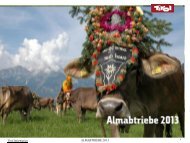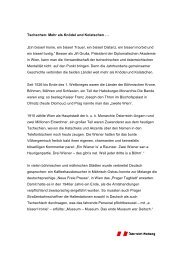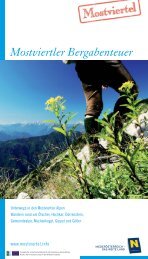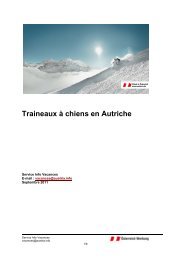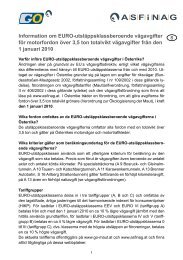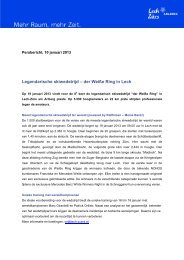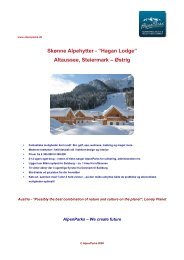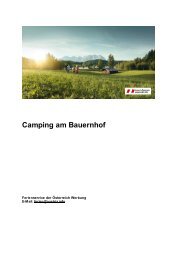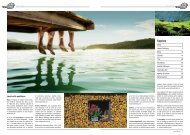Zum pdf Download
Zum pdf Download
Zum pdf Download
Sie wollen auch ein ePaper? Erhöhen Sie die Reichweite Ihrer Titel.
YUMPU macht aus Druck-PDFs automatisch weboptimierte ePaper, die Google liebt.
Der Volkstanz hat in Tirol eine jahrhundertealte<br />
Tradition. Er wurzelt nicht<br />
nur in der bäuerlichen Tradition, sondern enthält<br />
auch Elemente städtischer und höfischer Tanzformen.<br />
Getanzt wurde und wird dem Brauch nach<br />
zu bestimmten Jahreszeiten: im Fasching, im<br />
Mai, zur Erntezeit im Herbst. Aber selbstverständlich<br />
auch zu Hochzeiten, Bällen und Kirchtagen.<br />
Doch was das Volk belustigte, sah die Kirche gar<br />
nicht gerne. Noch im 19. Jahrhundert war ihr das<br />
bunte Treiben auf den Tanzböden der Volksfeste<br />
ein Dorn im Auge.<br />
Immer schon als besonders musikalisch und<br />
tanzfreudig galten die Bewohner des Zillertals.<br />
Folk dancing is a centuries old tradition<br />
in Tyrol. It is not only rooted in the<br />
farming tradition but also includes elements of<br />
urban and courtly types of dance. According to<br />
custom, dancing was and is a feature at certain<br />
times of the year: during carnival, in May,<br />
at harvest time in the autumn. And of course<br />
at weddings, balls and church fairs. However,<br />
what amused the people was not popular with<br />
the Church. The lively action on the dance floors<br />
at folk festivals was already a thorn in their<br />
side in the 19th century.<br />
The Zillertal residents were always considered<br />
to be extremely musical and keen dancers. They<br />
68



